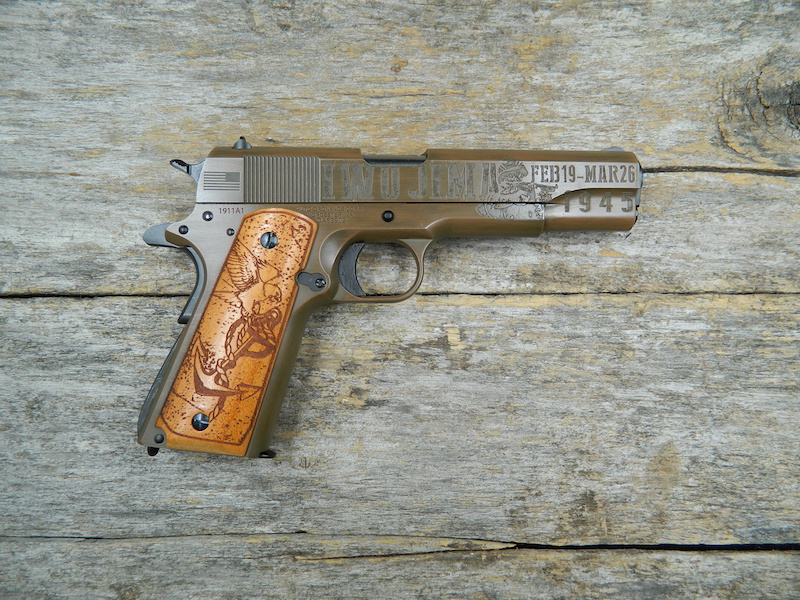


As the names convey, the magazine capacity of each was, respectively, 13 rounds, 12 rounds, and 10 rounds. The Officer's ACP-size Para was the P12.45 (the author’s first Para-Ordnance pistol). The new Commander-size Para was the P13.45. But, unlike Colt and all the other single stack 1911 makers, Para-Ordnance used a different frame size for each slide and barrel length. A couple of years later they introduced the subcompact P10.45, with a 3 inch barrel and slide. By the mid-1990s (apparently around 1994) Para-Ordnance had expanded their line-up to include full-size (P14.45), mid-size (P13.45), and compact (P12.45) pistols, with slide and barrels lengths of 5 inches, 4¼ inches, and 3½ inches.
#Federal ordnance 1911 serial numbers
Unfortunately, the records of Para-Ordnance serial numbers and production dates did not survive the sale of the company to Remington, so the author has not been able to pinpoint the year with any certainty. Since the P14.45 was derived from the “gunsmith kit,” and used the same size mainspring housing as a Colt Government Model, things weren’t too complicated–yet. 45 ACP and it was named, appropriately, the P14.45–the name immediately identifying both the capacity and the caliber.

The new pistol was initially offered only in. The design had been tweaked slightly, so the 13-round capacity of the original “gunsmith kit” had increased to 14 rounds and the shape of the double stack magazine well had been smoothed and rounded a bit. All other parts were simply transferred from the original, single stack pistol.īy 1990 the Para-Ordnance “gunsmith kits” had developed such a following that the company went to the next step and introduced their own complete pistol. The “gunsmith kits” consisted of the double stack receiver, the magazine catch lock, the trigger, grip panels, and a double stack magazine. However, within a few years they had progressed to producing a “gunsmith kit,” which included all the parts needed to convert a Colt Government model from a seven-shot, single stack pistol to a then unheard of 13-shot, double stack pistol. Para-Ordnance began in 1985 as a manufacturer of paintball guns. Life was good.Īnd then a small Canadian company called Para-Ordnance burst upon the scene, and life for 1911 aficionados was changed forever. Everyone knew what models were what size, and which parts fit which models. Other makers of 1911s generally followed this pattern, although some (such as the Springfield Armory Champion) used a 4-inch slide and barrel rather than the Colt Commander’s 4¼-inch slide and barrel. The Colt Officer's ACP and the later Colt Defender were both built on a frame with a shorter magazine well and grip, and both used magazines originally designed to hold six rounds (later expended to seven rounds). The original, military-issue M1911 and M1911A1, and the civilian Government Model and Commander pistols were all built on the full-size frame and used magazines originally designed to hold seven rounds (later expended to eight rounds). There were four sizes of pistol, and they were built on only two frame (receiver) sizes. A Basic Guide to Para-Ordnance Pistol Sizesīy Harwood Loomis for The M1911 Pistols Organizationīefore Para-Ordnance burst on the 1911 scene in the early 1990s, things were easy for 1911 owners.


 0 kommentar(er)
0 kommentar(er)
